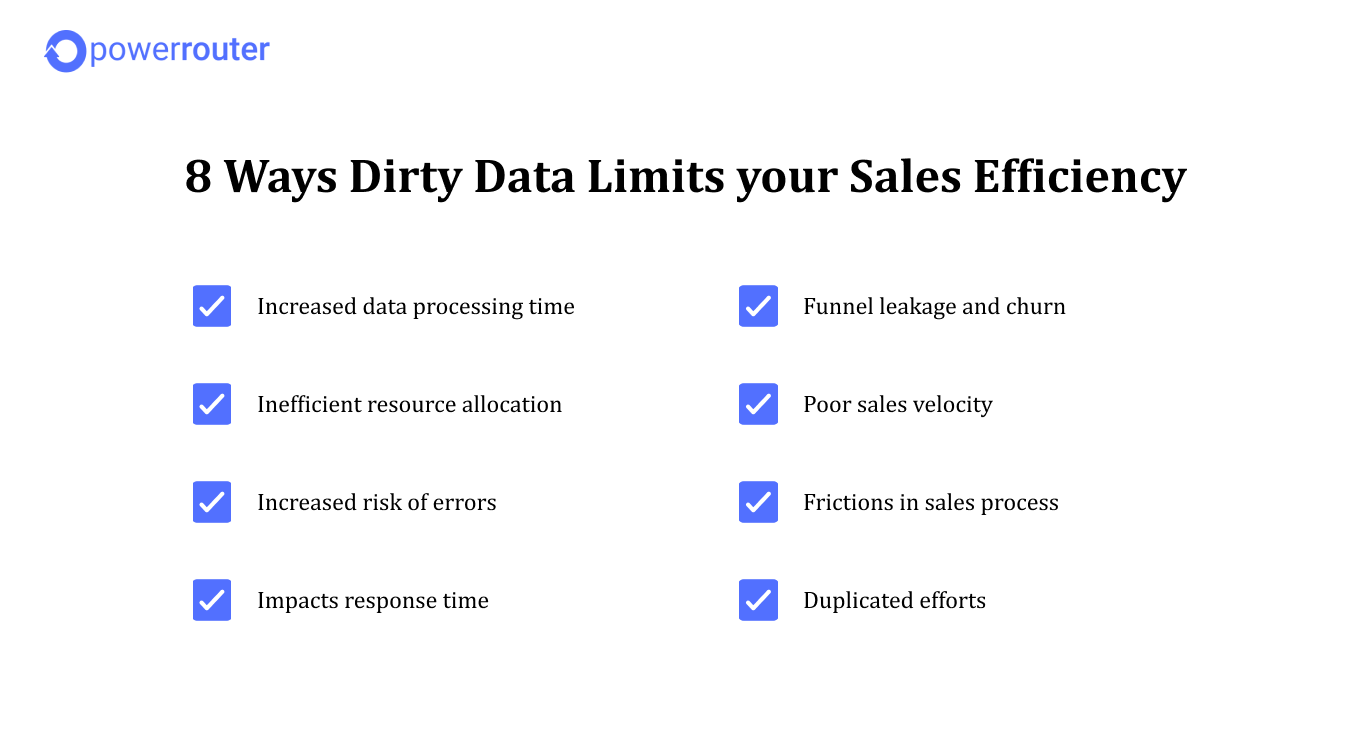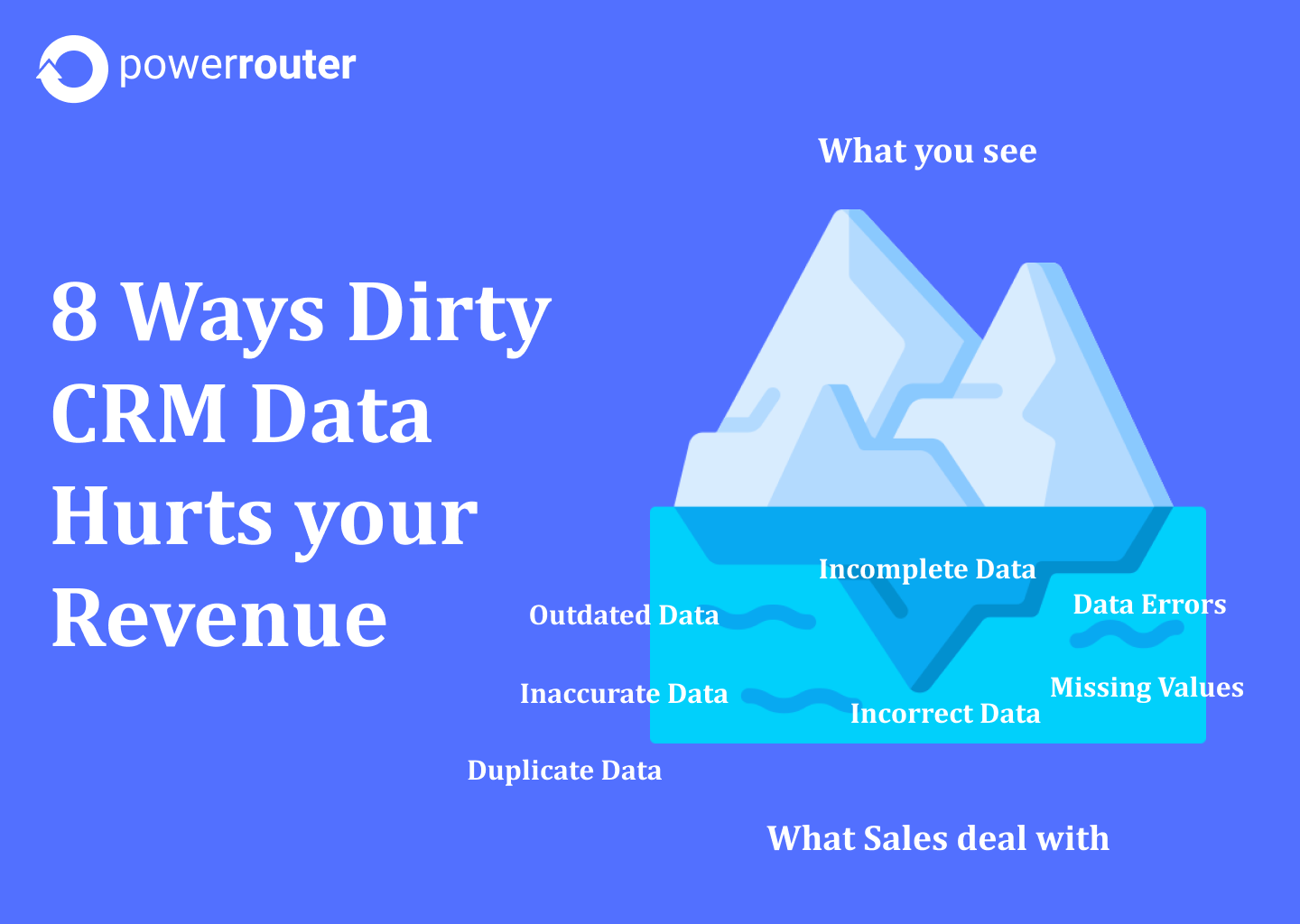In 2020, 2.5 quintillion bytes of data was created daily, and it is projected to reach 463 zettabytes by 2025. As the volume of data being generated continues to grow exponentially, so does the emphasis on data integrity. The importance of data integrity cannot be overstated as a growing number of organizations base their critical operational decisions on their business data.
On the other hand, research shows that 25% of B2B database is obsolete, costing companies a staggering $3 trillion annually on average. Furthermore, organizations are reported to lose $14.2 million each year due to dirty data. It’s no surprise, then, that 92% of C-Suite executives are concerned about their organization’s data integrity. Because, the massive volume of data generated every day means that it has a short lifespan before it becomes outdated.
In fact, B2B data decays monthly by 2.1% and annually by 22.5%, which means 2% of B2B data ends up in junk every month. While the numbers may seem overwhelming, they do not fully capture the true cost-impact of dirty data on your bottom line. To gain a deeper understanding of this issue, it’s crucial to examine it more closely and analyze how dirty data can impact various aspects of your sales process from prospect outreach to your sales team’s productivity. So, buckle up.
What is Dirty Data?
Dirty data refers to data that is inaccurate, incomplete, or inconsistent, and as a result, is unreliable for making informed decisions or drawing valid conclusions. This type of data may contain errors, duplications, missing values, or inconsistencies that can negatively impact business operations, decision-making, and customer satisfaction. Dirty data can be caused by a variety of factors, such as data entry errors, data migration issues, or system errors, and can result in wasted resources, lost revenue, and damaged reputation. Therefore, it is essential to regularly monitor, clean, and maintain data quality to ensure that data is accurate, complete, and consistent, and can be effectively used for business purposes.
8 Ways Dirty Data Limits your Sales Efficiency & Tips to Tackle it

Increased Data Processing Time
According to the Salesforce State of Sales report, 2023, sales reps spend only 28% of their time actually selling.

Sales teams spend an average of 5.5 hours/week manually entering contacts and activities into CRM, causing them to spend less time selling. Bad CRM or sales data like duplicate records, missing lead fields, or inadequate prospect data, cause them to spend extra time in manually identifying and correcting these errors. It further takes away their precious time from selling and reduces their overall productivity.
In addition, dirty data can also lead to incorrect or incomplete reporting, resulting in forecasting accuracy, missed sales opportunities or misguided sales strategies.

It takes hours, days, weeks, or even months to clean your CRM data sometimes. However, automating your Salesforce dedupe processes in real-time can save you hours of dealing with duplicate data later on.
Set up a real-time deduplication process that merges duplicate records as soon as they enter your CRM and deletes fake contacts.
Inefficient Resource Allocation
Inaccurate or incomplete data can cause sales teams to focus on the wrong leads or opportunities, resulting in wasted resources. For instance, if a salesperson spends time pursuing a lead that turns out to be invalid due to incomplete or incorrect information, it could lead to wasted time and effort that could have been better used elsewhere. Additionally, dirty data can also result in missed opportunities if sales teams fail to identify valuable leads or prospects due to inaccurate data.

A fuzzy-match process that identifies, matches, and merges duplicates in real-time can prevent duplicates getting assigned to different reps. Real-time deduplication keeps your CRM always clean and prevents situations like multiple reps contacting the same leads, reps chasing after duplicate contacts etc.
Increased Human Errors
Human errors contribute to 60% of bad data followed by poor interdepartmental communication (35%) and inadequate data strategy (28%). What’s worse is that 57% don’t find out about their data errors until and unless reported by their customers/prospects. It gets frustrating when one of these things happen:
- Multiple reps contacting the same prospect, bombarding them with sales messages. You eventually lose the deal due to poor prospect experience.
- An inquiry from your existing customer is routed to your sales team instead of the customer service team. The frustrated customer complains about the poor state-of-customer-service and churns.
Automating data entry and CRM deduplication can reduce human errors and keep your CRM organized.
Duplicated Efforts
Over 45% of your CRM data is duplicate, inadequate, or outdated. It can lead to a variety of scenarios including:
- Reps contacting prospects that are no longer with the target company
- Multiple reps contacting the same lead/contact
- Contacting leads with wrong or inadequate information, resulting in frustration, decreased engagement, and reduced conversion rates.
- Conflicting information in different records, leading to confusion and difficulty in prioritizing leads.
- Lack of adequate prospect information hinders the sales outreach process.

Implement identify, match, and merge feature to prevent duplicates from entering your system.
Impacts Response Time
- If the contact data of a lead is incomplete, inaccurate, or inadequate, it requires additional time to collect & correct the data before contacting the lead. It slows down the response time.
- If the lead/contact has duplicate records, it takes time to discover the right contact information.
In addition to deploying a lead enrichment tool, standardizing lead fields in your CRM can go a long way in fixing all lead data issues. Foster a culture of responsible and disciplined CRM data entry to prevent bad data.
Funnel Leakage & Churn
79% of leads never convert. And only 27% of the leads get contacted at all. That’s leakage. A leaky sales funnel leads to prospects dropping off from the funnel mid-way.
- If the data used to qualify leads is incomplete or outdated, reps spend a lot of time prioritizing leads, resulting in delayed responses
- Inconsistent data makes it difficult to segment leads, causing prospects to drop off mid way the sales cycle.
- Duplicate data can cause confusion and lead to multiple sales representatives contacting the same lead, frustrating the prospect and causing them to choose your competitor over you.
Segmenting, prioritizing, and assigning hot leads to the right reps automatically in real-time, reducing the risk of delayed responses. Also, real-time data cleansing prevents duplicates from entering your CRM system.
Hindered Sales Processes
Incorrect/inaccurate lead data confuses sales reps and causes them to contact wrong prospects. In addition to wasting your reps’ time and hurting their productivity, it hinders your sales process. Sales reps spend their precious time on unqualified leads and manually validating lead data, leaving them with less to sell efficiently. Hence, dirty data can be a significant hurdle for sales teams, preventing them from selling efficiently and meeting their sales targets. Ultimately, it hurts your company’s revenue goals.
Prioritize qualified leads and make sure your reps are following-up with them on time.

Poor Sales Velocity
Sales velocity is the speed at which your sales teams move leads or deals through the sales funnel from one stage to the next. Sales reps often spend more time than usual in manually prioritizing leads, verifying lead data, and cleaning up the data, impacting their outreach efforts.
They might waste time on unqualified leads and miss out on high-quality opportunities altogether. All the manual tasks cause delays in the sales process, ultimately leading to decreased sales velocity.
Automatic data enrichment and duplicate merging can save your sales teams a lot of time and hassle. They don’t have to spend time on manually validating data or matching duplicates, allowing them to spend more time contacting and following up with leads on time.
Clean Data Means Efficient Sales Processes
Clean data ensures an efficient sales process by providing your sales teams with accurate and reliable information. It helps sales teams target their outreach efforts more effectively, identify and prioritize the most promising leads, and avoid wasting time on unqualified leads.
- Accurate lead segmentation: With clean data, sales teams can segment their leads automatically based on custom criteria. It enables sales reps to target their efforts more effectively and prioritize their outreach on the most promising leads.
- Better pipeline visibility: Clean data provides a clear view of the pipeline – which reps are contacting which leads and when, status & progress of each lead, and stage of each lead in the sales cycle. It allows sales managers to set realistic targets, measure their pipeline progress effectively, and allocate resources to their team optimally.
- Better sales: Clean data ensures that sales reps have accurate and up-to-date contact information of potential customers. It helps them contact the leads confidently and on time, avoiding frustrating experiences for the reps and the prospects.
Final Thoughts
Dirty CRM data might initially seem like a small problem. But, it hinders your organization’s revenue growth and limits your ability to scale effectively. Hence, clean data is foundational to an efficient sales process. Cleanse your CRM data regularly and maintain data integrity to enable your sales teams to be more productive and efficient – so that they hit their sales targets consistently.
